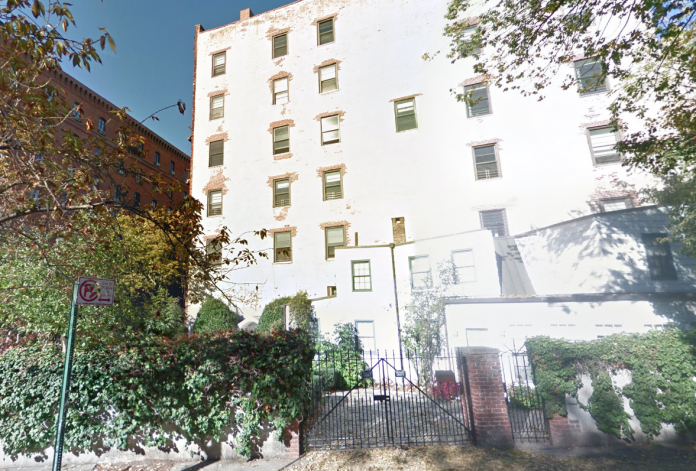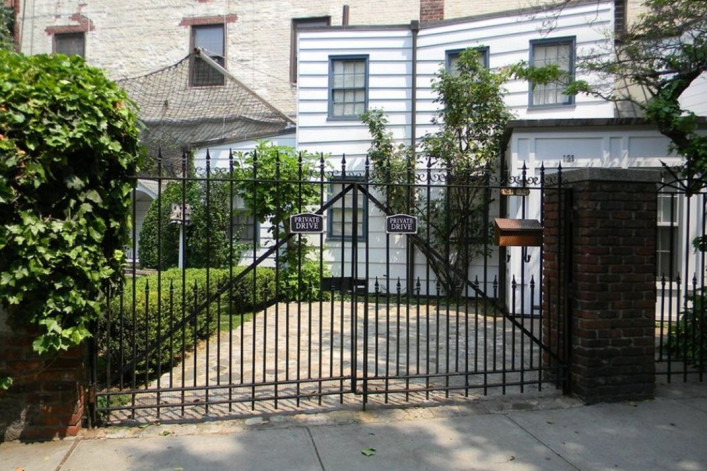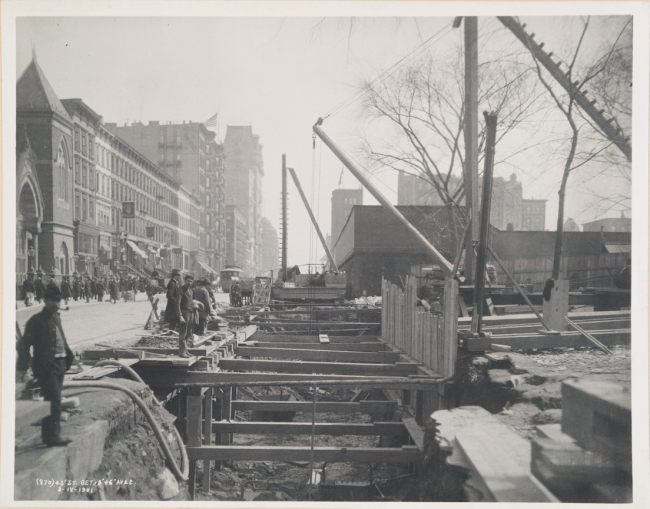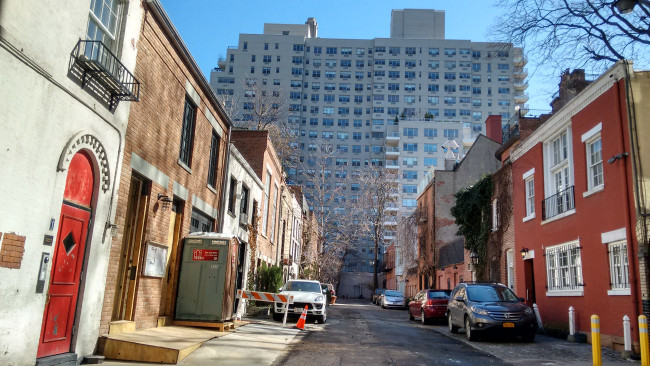Goodnight, development: The tale of 121 Charles Street, the former home of a beloved children's book author
Back in 2014, there was some serious rumbling downtown when a 1,000-square-foot home at 121 Charles Street was listed online as a "potential development site." At the time, the New York Daily News wrote that "preservationists started howling" about the advertisement; ultimately, however, the home was protected. Not only did the ensuing outcry from locals garner press coverage, but there was also the fact that the property is located in the Greenwich Village Historic District, where any changes to homes are subject to the approval of the Landmarks Preservation Commission.
Why the protectiveness over 121 Charles Street? At first glance, the property, a little clapboard house wedged right up against multi-tenant apartment buildings, looks rather out of place on this picturesque corner of the West Village.

And in a sense, it is: 121 Charles' juxtaposition with its surroundings stems from a long and fascinating history.
A farmhouse uptown
According to a report from the Greenwich Village Society for Historic Preservation (GVSHP), the home is likely over 200 years old, having been built as a farmhouse in the early 19th century. There's no record of who built the home, and a GVSHP blog post notes that it first appeared on maps of Yorkville in 1898, but could have been relocated there from some other location.
Back then, the Upper East Side neighborhood, as well as most everything above 14th Street, was farmland. (This Smithsonian map from 1836 reflects a downright bucolic uptown, with expansive plots of land for growing crops.) It remained so in 1868, when William Glass and his wife, both Irish immigrants, bought the home and operated a dairy from it.
The Hatching Cat, a blog about the animal history of NYC, writes that the surrounding land was then known as Louvre Farm, and the Glasses build a small brick house in front of their dairy, blocking it from street view. After William died, his wife and children settled into that house, renting out part of it as well as the farmhouse.
By the time the 1930s rolled around, the Glasses were still the owners; perhaps under financial pressure due to the Great Depression, they used a section of the brick building as a tea room. Per the New York Times, by the 1940s, the Glass family had expanded it into a full-scale restaurant called Healy's Dining Room.
A writer in residence
The little farmhouse that would later become 121 Charles Street remained hidden away—likely a suitable arrangement for its most famous tenant, Margaret Wise Brown. Author of the classic picture book, Goodnight Moon, Brown must have appreciated the solitude and privacy of her rental, where she lived during the late 1940s and early 1950s. Her final children's book, Mister Dog, even features an illustration of the house; you can see it on the blog New York Wanderer.
Brown lived a fascinating life; NPR reports on two biographies of the author, which reveal a rebellious and independent woman who had torrid love affairs with men and women. Perhaps aptly, her life was also cut short in a dramatic and boisterous way: per Slate, following an appendectomy, she kicked up one leg to show a nurse how quickly she was recovering and was killed by a sudden embolism.
She left her mark not only on the field of children's literature, but also on the property itself, which many New Yorkers still associate primarily with her, calling it "the Goodnight Moon house."
A move downtown
Brown also indirectly led to a pair of later tenants who were instrumental in the home making its journey from Yorkville to Greenwich Village. Jeremiah's Vanishing New York features the story of the Bernhards, a Swedish couple behind the move. When Brown lived in the house, she had a fiance who later married the ex-wife of a sea-faring Norwegian adventurer; this led to the pair's Scandinavian sailing friends renting the home, until ultimately, Sven Bernhard and his wife took the keys.
Sven's wife Ingrid tells Jeremiah Moss that initially, the house's disrepair alarmed her, but that she soon came to love it. The Bernhards fell for its charm so much, in fact, that they went to battle for it. After the Glasses sold the property in 1965 to the Archdiocese, the Bernhards went to court to save it from being demolished to make way for a senior citizens' home.
They won ownership, but the work wasn't over: The city said that the senior home was going up regardless, and the Bernhards had to move the property. They eventually decided on a vacant lot on Charles Street as the perfect location, and on March 5th, 1967, the farmhouse made its way downtown on a flatbed truck. (See the GVSHP report for photos from the Times of the house being pulled down Second Avenue; it looks rickety and precarious, but it arrived in one piece.)
New ownership and a mission to protect the home
Shortly after the move, in 1969, the Greenwich Village Historic District was established, and the house at 121 Charles Street was included in the landmarked neighborhood. The Bernhards remained in residence until the mid-1980s; in 1988, a couple named Suri Bieler and Eliot Brodsky purchased it. They later undertook a renovation, with the approval of the Landmarks Preservation Commission.
The home seems to have exerted a magnetic pull on Bieler; in a Times profile of her, she recalls spotting it as a child on a visit to the city, seeing a man in its front yard (presumably Bernhard), and saying, "He's the luckiest man in New York."
In her interview with Jeremiah Moss, conducted in 2014 after the house had been listed as a development site, Ingrid Bernhard expressed confusion as to why the owners would put it on the market. But as Moss observes, the surrounding area reflected a "rising tsunami" of development.
There was also a tsunami of backlash to the idea of the home, after its long and winding history, being destroyed. (Scouting NY also chronicled the house's contentious debut on the real estate market and has plenty of pictures of the property.)
Andrew Berman, executive director of the GVSHP, recalls that "the owner claimed that [the language of the listing] was something the realtor had done and she didn't really support, and that language was taken down right away. Since then, there's been no movement in terms of the sale of the house. I don't know what the owner's plans are at this point."
He adds that any changes to the home must be okayed by the LPC, which offers a measure of protection. That said, though, the LPC's regulations are ultimately subjective, so the GVSHP has to remain viligant about preserving such slices of city history.
"We want to make sure there's as much information as possible about why this house is so significant and interwoven with the history of Greenwich Village, so that should such a situation arise again, we'll be fully armed with the strongest argument possible that this house should not be treated a blank slate," Berman says. "The farmhouse has survived for over 200 years and miraculously ended up at this location, and it should always exist as standalone farmhouse on that site."
You Might Also Like





























